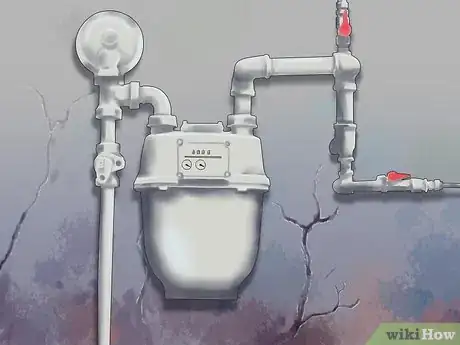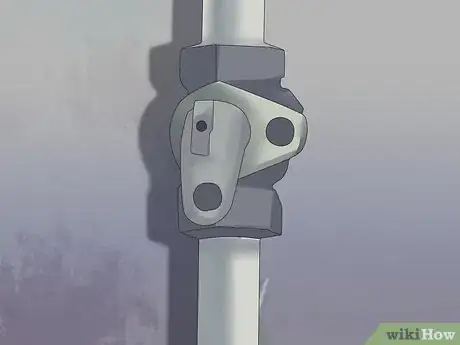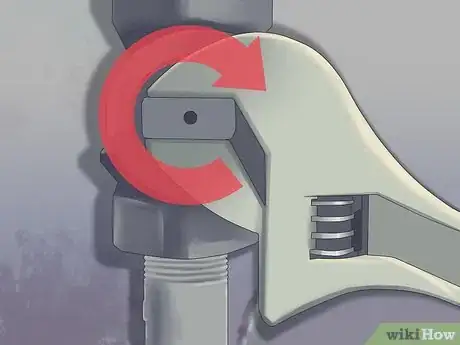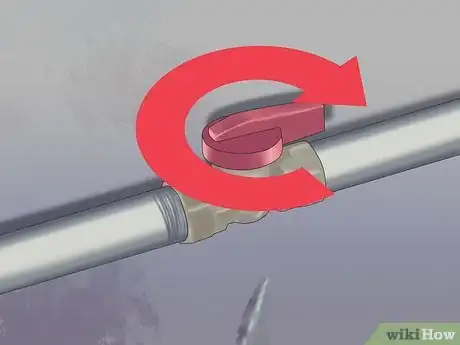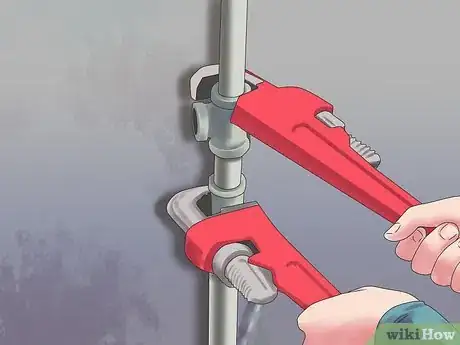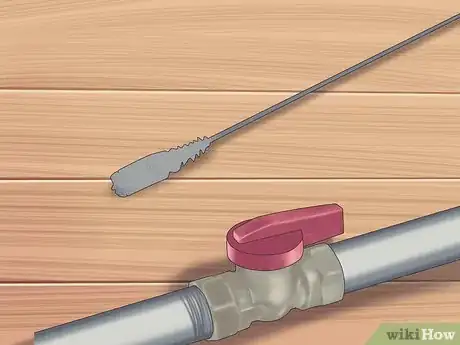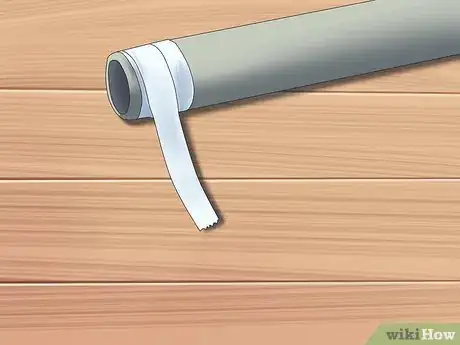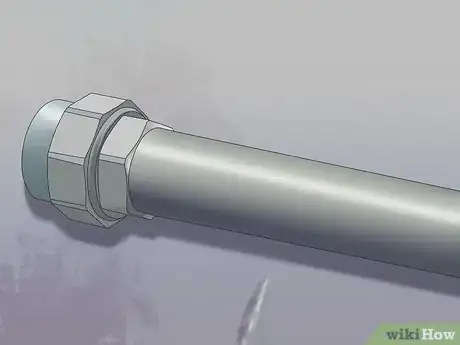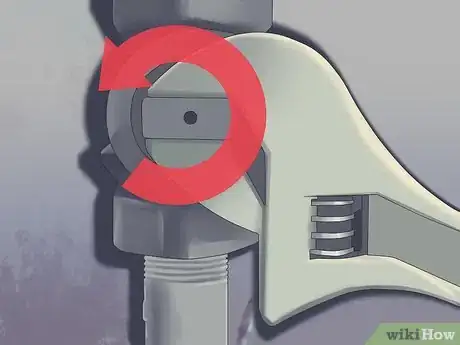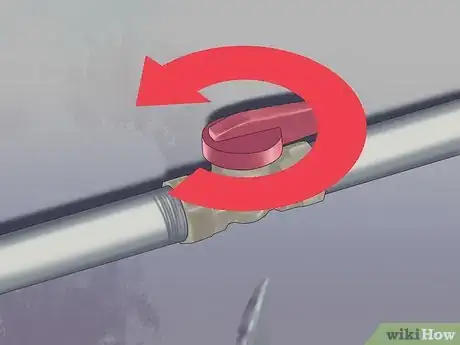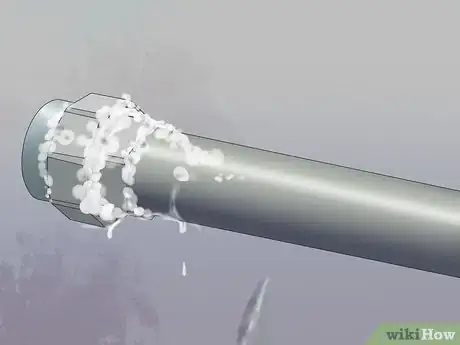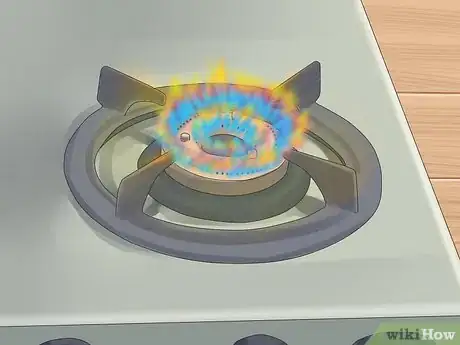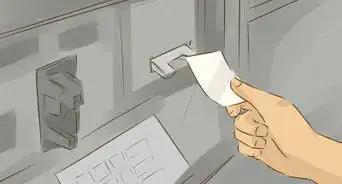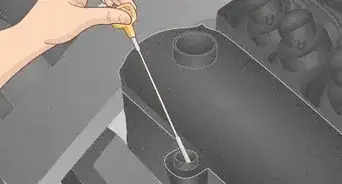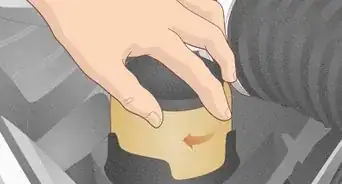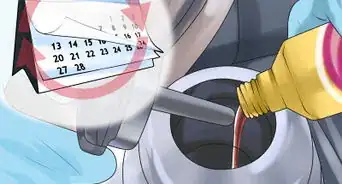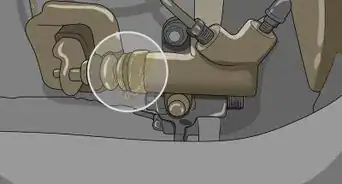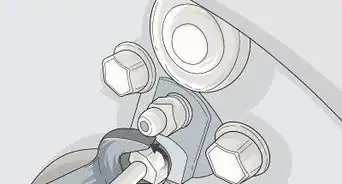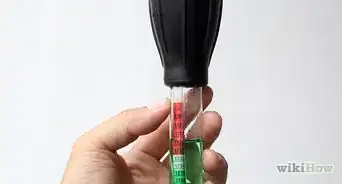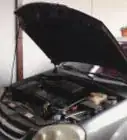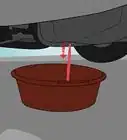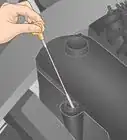wikiHow is a “wiki,” similar to Wikipedia, which means that many of our articles are co-written by multiple authors. To create this article, 11 people, some anonymous, worked to edit and improve it over time.
This article has been viewed 231,260 times.
Learn more...
If you have an unused gas line that you want to cap, you can do this with the right materials. This will help prevent any gas leaks that might come from the unused line. Once the line is securely capped, you can rest easier knowing that your home is safe!
Steps
Turning off the Gas
-
1Locate the gas meter. The gas meter is either near the garage or at the front of your house. It will either be under your house, in a cabinet, part of a multiple meter, or underground. The main gas valve is located at the gas meter. [1]
-
2Find the main valve.On the gas meter, there are two pipes. One comes into meter from the gas supplier, and the other goes from the meter into your house. The main valve is located on the pipe that comes in from the gas supplier. The main valve looks like a thick rectangular metal tab with a hole. The valve is parallel to the line when it is on and perpendicular when it is off.
- On a multiple meter the valve is usually located at the top of a shared pipe. Each unit has an individual shut off valve. Make sure you know which meter is yours so you don't accidentally shut off someone else's gas supply.
- Check with your landlord to make sure the meter goes to your unit.
Advertisement -
3Turn the valve off. Use a crescent wrench to turn it 90 degrees. There will be another metal rectangular tab that is fixed, which runs perpendicular to the gas line. When the gas is turned off, the holes on both of the tabs will line up.
-
4Turn the gas line off.Make sure the gas line's valve is also turned to the off position.
Capping the Line
-
1Remove any fittings or additional piping on the gas line. Use a double wrench technique to loosen or remove the the fittings or piping so you don't destroy any other threaded fittings under the valve.[2]
- A double wrench technique means holding the valve with one crescent wrench while loosening the fitting with another crescent wrench.
- If you are unable to use or don't have crescent wrenches, then use pipe wrenches instead.
-
2Use steel wool to clean the pipes. Brush the threading with the steel wool until it is clean. Make sure to clean any wool fibers left on the pipe.
-
3Wrap Teflon tape around the thread of the cap five times. Hold the tape down tight with your thumb on the first wrap. Then, overlap the tape with each wrapping until is covered. Make sure you wrap tape clockwise around the plug so it won't unravel as you thread it. [3]
- Use Yellow Teflon Tape which is rated for gas.
- You can also use Teflon pipe dope. Apply the dope evenly on the threads on the gas line. Do not use the dope and tape together.
- Use the appropriate cap. If the pipe is brass, use a brass cap. If it is black iron, use a black iron cap.
-
4Put the threaded cap on gas line. Tighten the cap with your fingers. Once it is tight enough to stay on, use the double-wrench technique to fully tighten the cap.[4]
- Do not tighten the cap too much. In fact, tightening the cap too much could crack the cap and cause a gas leak.
Checking for Leaks
-
1Turn the main gas back on. Use your crescent wrench to turn the metal tab back to the on position. The metal tab should now run parallel to the incoming line from the gas supplier.
-
2Turn the gas line on. Once the gas is turned on, go back to the line and turn its valve on as well. If you do not turn the gas line on, then you will not be able to test for any possible leaking.
-
3Check for leaks. Put a 50/50 mixture of dish soap and water into a spray bottle and shake it. Spray the mixture onto the gas cap. If you do not see any bubbles, then the cap is installed correctly. However, if you see bubbles appear around the cap that means the gas is leaking. Repeat the steps until there is no leak.
- Besides looking for bubbles, listen for gas escaping. It will sound like hissing.
-
4Relight pilot lights. You may need to relight the pilot light on your water heater and on other appliances since you turned off the gas. [5]
Community Q&A
-
QuestionIf there is a vacant or abandoned natural gas line near my home, could it be dangerous? How close to it can a fire be lit?
 Community AnswerNo, it isn't dangerous if it's actually abandoned. If you smell any gas, then get the utility to address it properly. Don't go within 20-feet of the line with any open flame.
Community AnswerNo, it isn't dangerous if it's actually abandoned. If you smell any gas, then get the utility to address it properly. Don't go within 20-feet of the line with any open flame. -
QuestionI am using Pro-Flex gas line, can I bury it underground?
 Community AnswerNo. You need thick-walled threaded pipe for most anything that's concealed. The Pro-Flex may not even stand up to an unknowing gardener's shovel.
Community AnswerNo. You need thick-walled threaded pipe for most anything that's concealed. The Pro-Flex may not even stand up to an unknowing gardener's shovel. -
QuestionCan I just shut off a valve that goes from my house to my grill to remove it safely?
 Community AnswerYes, but make sure you cap it also, as a person could turn it on by accident.
Community AnswerYes, but make sure you cap it also, as a person could turn it on by accident.
Warnings
- Avoid using anything involving fire (like a cigarette) while working on gas.⧼thumbs_response⧽
- Check with your home insurance provider and your power company to see if your allowed to switch off your gas and cap a line. If you violate policies, you may not be covered if something goes wrong.⧼thumbs_response⧽
Things You'll Need
- A gas cap (made of the same material as the gas line)
- 2 crescent wrenches
- 2 pipe wrenches (if needed)
- Yellow Teflon Tape
- Dishwashing Soap
- Spray Bottle
- Safety goggles
- Gloves
References
- ↑ http://www.pge.com/en/mybusiness/edusafety/gaselectric/turngasoff/index.page
- ↑ http://homeguides.sfgate.com/cap-seal-gas-line-kitchen-39938.html
- ↑ http://www.aconcordcarpenter.com/removing-a-gas-fireplace.html
- ↑ http://homeguides.sfgate.com/cap-seal-gas-line-kitchen-39938.html
- ↑ http://www.aconcordcarpenter.com/removing-a-gas-fireplace.html
About This Article
To cap a gas line, you’ll need to remove any fittings or additional piping from the gas line and clean the exposed threading on the pipe. After that, you would cover the threading with Teflon tape before putting the cap on the gas line and tightening it with a wrench. Before you start working, make sure to locate the main valve on your gas meter and turn the gas off. Additionally, use a cap that matches your pipes, such as a brass cap if you have brass pipes or a black iron cap if your pipes are made of black iron. To learn how to check for leaks once you’ve capped your gas line, scroll down!
